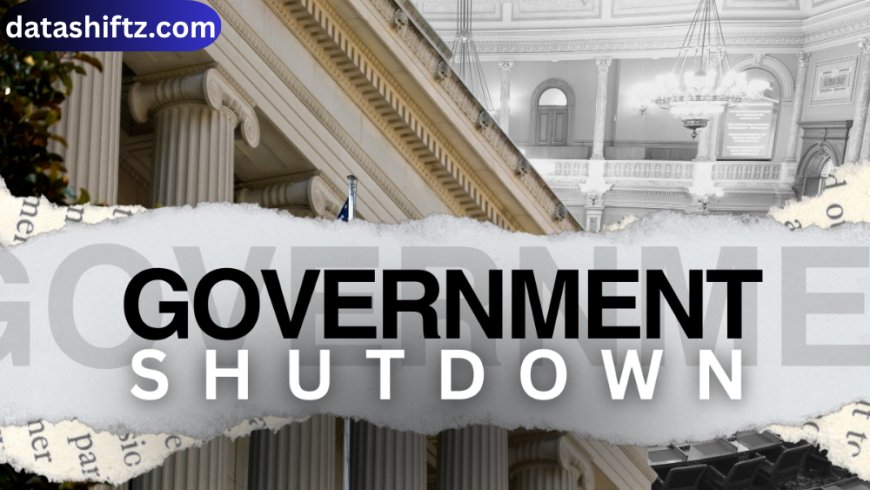Senate Government Shutdown: A Deep Dive into the 2025 Fiscal Crisis

Introduction
As of October 7, 2025, the United States finds itself in the midst of a significant government shutdown. The Senate has repeatedly failed to pass funding legislation, leaving federal agencies closed and hundreds of thousands of federal workers furloughed. This impasse has led to widespread economic uncertainty and heightened political tensions. In this article, we will explore the causes, impacts, and ongoing developments surrounding the Senate government shutdown.
Understanding the Senate Government Shutdown
What Is a Government Shutdown?
A government shutdown occurs when Congress fails to pass funding legislation to finance federal agencies. Without this funding, non-essential government services cease operations, and federal employees are furloughed or work without pay. In this instance, the shutdown began on October 1, 2025, after the Senate could not reach an agreement on a stopgap funding bill.
The Role of the Senate
The Senate plays a crucial role in the appropriations process. For a funding bill to pass, it requires a 60-vote majority to overcome procedural hurdles, such as the filibuster. In the current situation, the Senate has repeatedly failed to garner the necessary votes, leading to the ongoing shutdown.
Causes of the Shutdown
Disagreements Over Healthcare Funding
The primary point of contention between Democrats and Republicans is the funding of healthcare programs. Democrats insist on extending Affordable Care Act (ACA) subsidies and reversing recent Medicaid cuts. Republicans, led by Senate Majority Leader John Thune, have refused to negotiate on these issues without first restoring government funding. This deadlock has prevented the passage of any funding legislation.
President Trump's Stance
President Trump has signaled a willingness to negotiate healthcare reforms with Democrats. However, he insists that the government must reopen before any discussions take place. Democratic leaders, including Senate Minority Leader Chuck Schumer, have dismissed these remarks, asserting that no current negotiations are happening.
Impacts of the Shutdown
Federal Workforce Disruptions
The shutdown has led to the furlough of approximately 750,000 federal workers. Many are uncertain about their pay and job security, causing significant stress and financial strain. Essential services, such as national security operations, continue, but other departments, including the Environmental Protection Agency and the Department of Education, have been affected.
Economic Consequences
The Congressional Budget Office projects that the shutdown could cost the economy up to $400 million per day. This includes lost productivity, delayed federal contracts, and disruptions to services that businesses and individuals rely on.
Public Opinion
Public sentiment appears to favor Democrats slightly, with 53% blaming Republicans for the shutdown. However, the prolonged deadlock has eroded trust in both parties, with many Americans expressing frustration over the lack of progress.
Key Facts About the 2025 Senate Government Shutdown
| Aspect | Details |
|---|---|
| Start Date | October 1, 2025 |
| Duration | Ongoing (as of October 7, 2025) |
| Affected Workers | Approximately 750,000 federal employees |
| Economic Impact | Estimated $400 million per day in losses |
| Primary Dispute | Funding for Affordable Care Act subsidies and Medicaid |
| Senate Vote Outcome | Repeated failures to pass funding bills (e.g., 52-42 vote on October 6) |
| President's Position | Willing to negotiate healthcare reforms post-shutdown |
| Democratic Response | No current negotiations; insist on healthcare funding as a condition |
Potential Consequences of a Prolonged Shutdown
-
Widespread Federal Layoffs: Continued furloughs could lead to permanent job losses if the shutdown persists.
-
Delayed Federal Services: Programs such as Social Security, veterans' benefits, and disaster relief may experience delays.
-
Economic Slowdown: The cumulative financial impact could lead to a slowdown in economic growth.
-
Erosion of Public Trust: Ongoing gridlock may diminish public confidence in government institutions.
-
Increased Political Polarization: The shutdown could deepen partisan divisions, making future cooperation more challenging.
Conclusion
The Senate government shutdown of 2025 underscores the deepening political divisions within the United States. With no clear path to resolution, the shutdown continues to affect federal workers, disrupt services, and strain the economy. As negotiations remain stalled, the American public watches closely, hoping for a swift and effective resolution to this fiscal crisis.






























